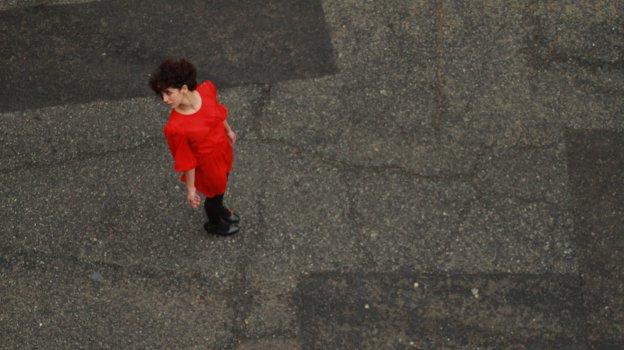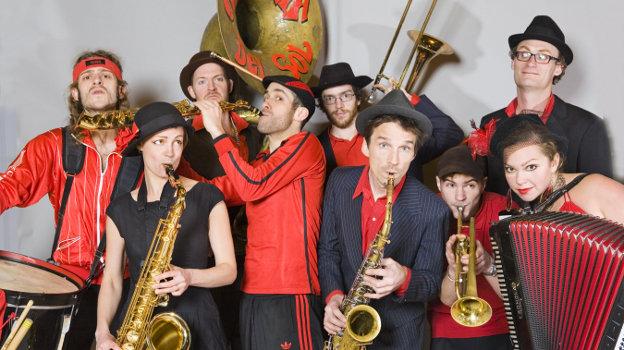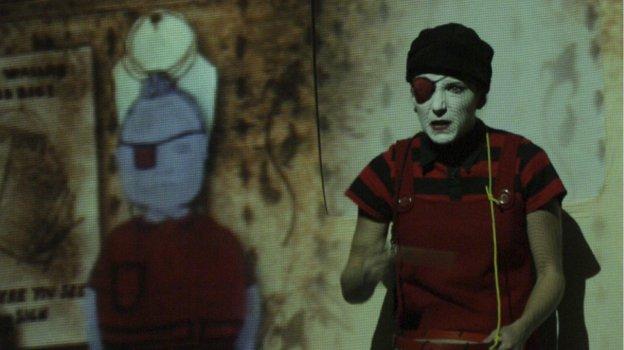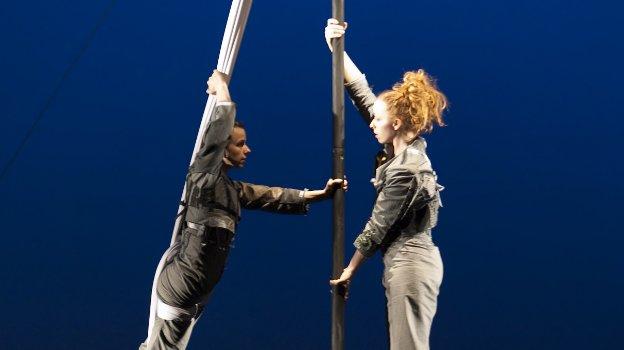Maybe if you choreograph me… starts at Forest Fringe cafe. The lone audience member is taken on a walk through the streets. Who is this person leading the way? Is she the artist? Has it started yet, you wonder, looking round at the busy, driven people scurrying by and the slow, dreamy people ambling along. You are led into a bookshop, up the stairs and into the Anatomy section. Behind a screen, by a large window, are two small tables holding papers, binoculars, a Dictaphone. You are placed facing the window and left. ‘You’ll know what to do,’ says the person who has led you there…
The performer, on the streets, wears wireless headphones. She’s dressed like any other young female in Edinburgh, nothing to make her stand out, but this is clearly her, you realise, as she walks back for a third time, awaiting a command to stop. The audience member, viewing here from a window at the top of the shop, speaks into a Dictaphone when asked to.
Live artist Tania El Khoury describes this work as ‘a relational piece that happens between one female performer and one male audience member’. (As a critic I’m allowed in as an honorary man.) Ostensibly, he dictates her every move. As the copy puts it: ‘He can choose to introduce himself to her or to remain anonymous. He can choose to follow a script or to improvise. Her choices, however, are less straightforward.’
Of course it is far less simple: she has sculpted and choreographed the work; she gives her viewer simple options of A and B responses. I feel, for the most part, that she is calling the shots. But I like the concept, enjoy the game. On herblog, Tania (I decide to name her Tania, then it becomes Tati as the show progresses – because I have a friend named Tania who gets called Tati) describes the work as ‘a shout against oppression’. The male viewer is a kind of everyman, an archetypal patriarch, representing all the world’s fathers, brothers, lawmakers, religious leaders, politicians. The men who dictate; and the men who rule by coercion. Tania is the archetypal female: the bride handed over, the girlfriend fought over, the sister whose honour is ‘protected’, the woman who isn’t allowed out of the house unaccompanied. All the women everywhere who have their choices dictated daily: wear a veil, dress smartly, wear heels, don’t wear heels, wear make-up, no make up, covered hair, big hair. It goes on and on, playing out differently from culture to culture. On one level, the piece references Tania’s cultural heritage as an Arab woman from Beirut, yet there are messages for all the men of the world about the control of women’s bodies, minds, souls.
So within the piece, the viewer is asked, from afar, to guide the performer’s actions: should she walk slowly or quickly? Should she cry or throw a hissy fit? Can she take a cigarette break now? He is asked to look at images and choose: how should a woman look? Like the glamorous, Westernised, Queen Rania of Jordan, or like the hijacker/freedom-fighter Leila Khaled, the so-called ‘poster girl of Palestinian militancy’? He is asked to read her a letter, a letter from him (archetypal/universal male) to her (in part universal woman, but with specific references to her biography written into the text).
Does it work? The ideas are bigger than the execution. There are times when I am speaking into the Dictaphone and the pre-recorded next request cuts in. There are physical moments that don’t synchronise as they should. As a long-term unreconstructed feminist, I find the sexual politics a little oversimplified. There are other levels it could go to. But I would rather, so much rather, a piece like this that is ambitious, thoughtful, challenging, interesting – if not quite there yet on execution – than something more polished with less to say.
Tania El Khoury is an artist whose work I will look out for in the future – I think we’ll be hearing a lot more from her…










